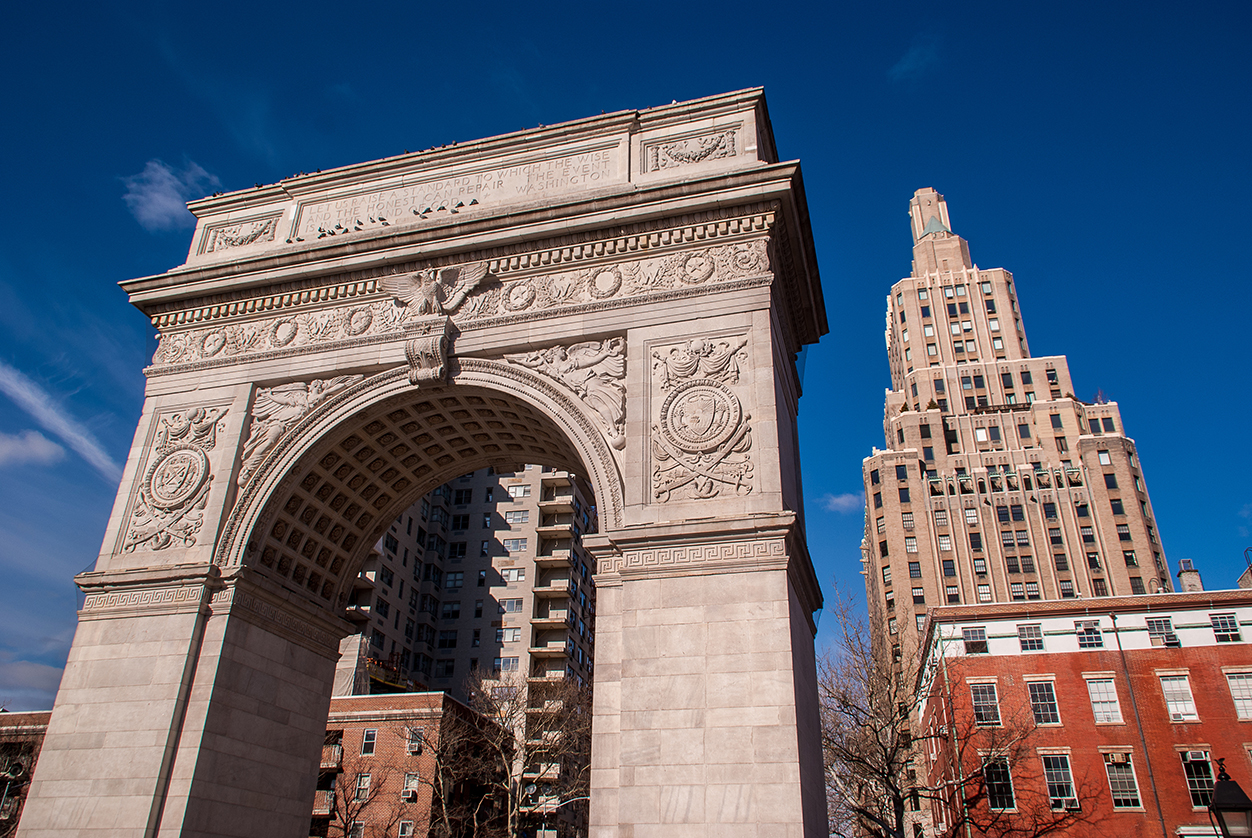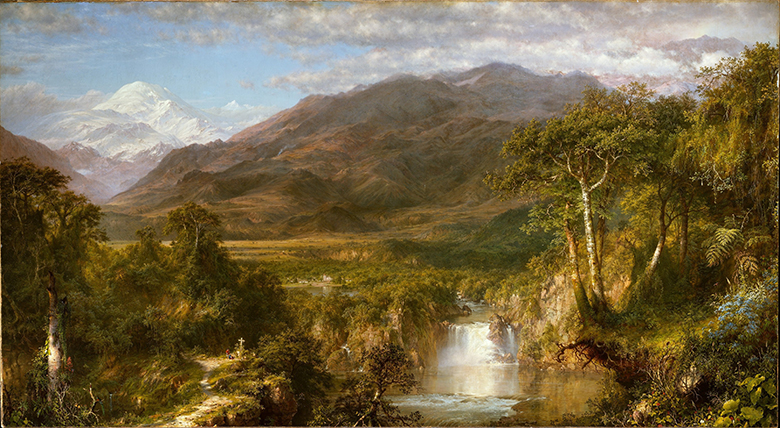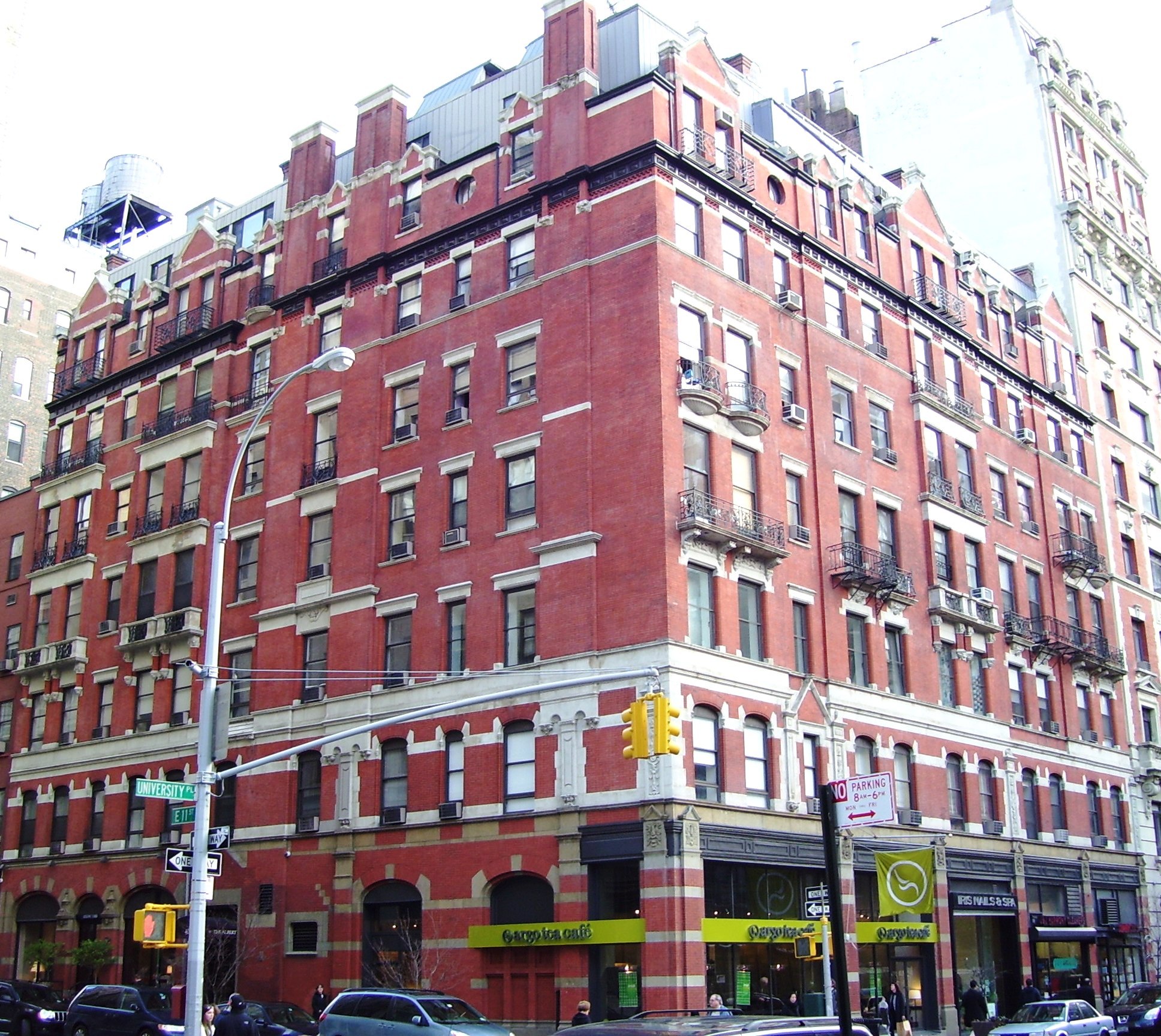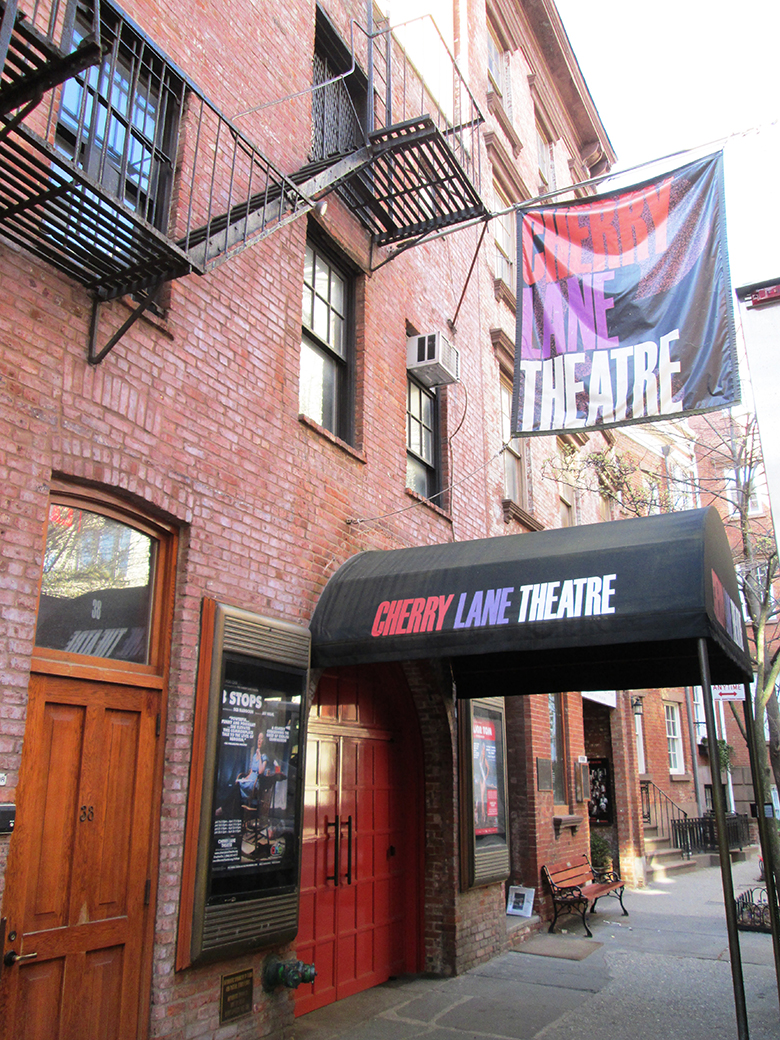Greenwich Village was immortalized as a bohemian epicenter of the arts in the 1950s and ‘60s, thanks to the likes of Jack Kerouac, Allen Ginsburg, William S. Burroughs, Bob Dylan, and the Velvet Underground, to name just a few. But one could argue that three institutions in particular caused the neighborhood to became a haven for artists, writers, and performers, beginning as far back as the mid-1800s.
The Village’s association with the arts and artists started with the construction of the Tenth Street Studio Building in 1857. Realizing that the cramped, poorly lit lodgings of most artists were not conducive to creativity, real estate investor and art aficionado James Boorman Johnston set out to create a building of apartments and studios exclusively for artists. He hired architect Richard Morris Hunt—whose later works included the Fifth Avenue façade of the Metropolitan Museum of Art—to design a three-story, 25-unit building at 51 West 10th Street, between 5th and 6th Avenues.
Frederic Edwin Church displayed his painting “Heart of the Andes” at the Tenth Street Studio Building in 1859. Image: public domain/Wikimedia
Frederic Edwin Church, a preeminent figure of the Hudson River School of landscape painting, was among the first tenants, as was Hunt, who used his space to establish the country’s first school of architecture. Winslow Homer and William Merritt Chase were among the other artists who flocked to the building, drawn not only by its relative affordability but also by the two-story-high domed exhibition space in the center, where tenants could show their work and host the receptions necessary to win clients.
The St. Stephen Hotel, later—and better—known as the Hotel Albert, also attracted plenty of artists, along with writers and other luminaries. Three townhomes built at 32-36 East 11th Street in the early 1850s were converted into luxury apartments in the mid-1870s with the addition of another building. The apartments became a hotel, which further expanded until it took up the eastern side of University Place between 10th and 11th Streets.
The former Hotel Albert is now a co-op. Image: Beyond My Ken/Wikimedia
Artist Albert Pinkham Ryder, whose brother managed the hotel, was a regular at its restaurant. Robert Louis Stevenson, Mark Twain, and Walt Whitman were among its guests. In the 1920s Hart Crane and Thomas Wolfe lived there, the former while writing his “modernist epic” poem The Bridge and the latter while teaching at New York University. Jackson Pollock was frequently seen propping up its bar in the 1940s. At least two seminal pop hits of the ‘60s were written here: the Lovin’ Spoonful’s “Do You Believe in Magic?” and the Mamas and the Papas’ “California Dreamin’.”
If the Tenth Street Studio Building established Greenwich Village as a center for artists and the Albert Hotel bolstered the neighborhood as a locale worthy of the literati, the Cherry Lane Theatre solidified the area’s reputation as a mecca of cutting-edge theater. The first building at 38 Commerce Street, between Barrow and Bedford Streets, was constructed in 1817 as a farm silo. It was replaced in 1836 by the structure that remains there today. Originally a brewery, it served as a tobacco warehouse and a box factory until 1924, when a group of actors, directors, and scenic designers converted it to a theater.
Cherry Lane Theatre. Image: Beyond My Ken/Wikimedia
Its first production was a play by a long-forgotten author named Richard Fresnell. By the end of the 1920s, however, it had produced plays by John Dos Passos (The Moon Is a Gong) and F. Scott Fitzgerald (The Vegetable). By the 1940s the theater became associated with groundbreaking works thanks to such productions as Emperor Jones by Eugene O’Neill, Juno and the Paycock by Sean O’Casey, and The Dog Beneath the Skin by W.H. Auden and Christopher Isherwood, which marked the stage debut of Bea Arthur.
Samuel Beckett’s Happy Days had its world premiere at the Cherry Lane Theatre in 1961; the theater became associated with Edward Albee in the ‘60s and David Mamet in the ‘70s. New York’s longest-running off-Broadway theater, Cherry Lane is still going strong. From September 19 through October 22, it will stage the New York premiere of The Gospel According to Thomas Jefferson, Charles Dickens and Count Leo Tolstoy: Discord by Scott Carter, and on November 7 it will debut an adaptation of Pride and Prejudice by Kate Hamill.
While the Cherry Lane Theatre continues to thrive, the Hotel Albert is a hotel no longer; it was converted into a 190-apartment co-op in 1984. The stately red-brick structure, however, was listed on the National Register of Historic Places in 2012. As for the Tenth Street Studio Building, it was razed in 1956 and replaced with a co-op building. The artists who had lived in the Tenth Street Studio Building in its heyday would no doubt have been bemused to learn that last autumn, actress Julia Roberts sold her penthouse there for $5.35 million.





